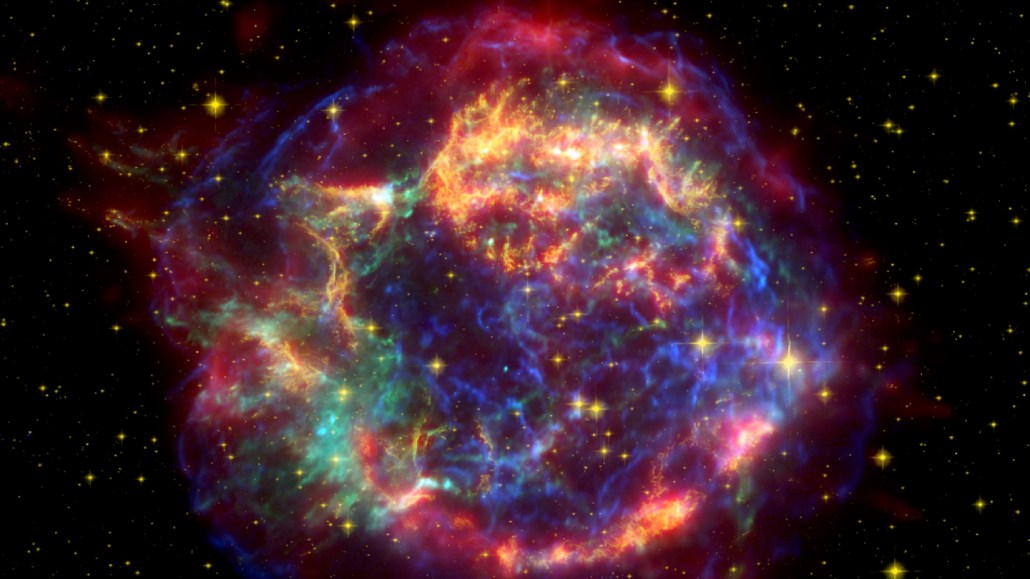
A massive star can give its galaxy lots of new carbon, especially if another star orbits the massive one. This composite image shows the remains of a massive star that exploded in the constellation Cassiopeia, with red indicating infrared radiation, yellow indicating visible light, and blue indicating X-rays.
O. Krause et al/Steward Observatory/JPL-Caltech/NASA (infrared); STScI/NASA (optical); CXC/SAO/NASA (X-ray)







